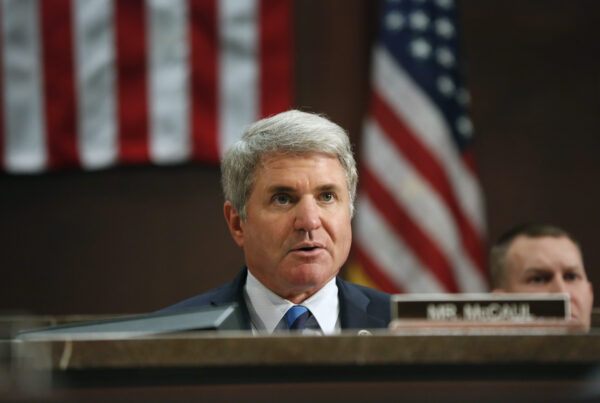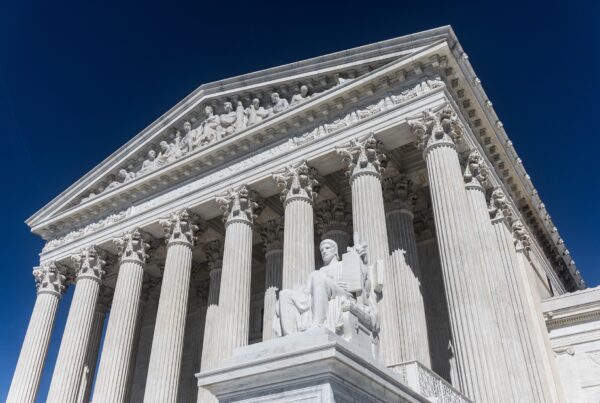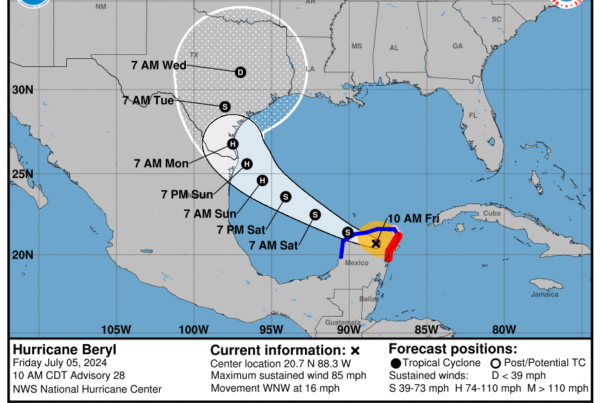The lore of Texas’ frontier days is filled with tales of shootouts and lawlessness. But as the Wild West was being tamed at the turn of the last century, justice often took a gray hue, especially along the border.
This is no more evident than in the tale of a Texas Ranger captain and a top Immigration Service official at the time named William Hanson. His story and the impact of his actions are recounted in the new book, “William Hanson and the Texas-Mexico Border: Violence, Corruption, and the Making of the Gatekeeper State.”
Author John Weber joined Texas Standard to discuss his new book. Listen to the interview above or read the transcript below.
This transcript has been edited lightly for clarity:
As I understand it, you are now a professor in Virginia, but your roots are in Texas, right?
Yes, sir. I’m from San Antonio, but I teach in Virginia now.
Did you hear of the story of William Hanson when you were here in Texas, or is this part of your research?
This was something that I discovered when I was researching, writing my dissertation, which became my first book: “From South Texas to the Nation.” William Hanson just kept popping up in strange places, both in primary research and in the secondary literature.
Throughout the process of sort of writing that and then revising it into the book, I kept sort of finding him, sort of coming back to this very strange character who had a number of top law enforcement positions, but also who just seemed to sort of appear at key moments during the kind of late 19th century into the early 20th century.
So who is William Hanson? Why was he popping up so much in your research?
For much of his career he was a law enforcement officer. He begins as a deputy sheriff in Gonzales County. He eventually becomes a deputy U.S. Marshal. He then, at the very beginning of the 20th century, became a U.S. Marshal.
He then leaves for Mexico during the kind of late Porfirian years, the years before the Mexican Revolution, and is there trying to basically kind of make himself into a major landowner and kind of oil company official and all these other things. But he ends up being booted out of Mexico, one step ahead of being executed in 1913, 1914.
In fact, I understand Hanson had a small role in the infamous pursuit of Gregorio Cortez. Is that right?
Yes. As a deputy U.S. Marshal in 1901, he is one of the many people involved in trying to sort of chase down Gregorio Cortez.
So if you look up kind of newspaper accounts of him, from various newspapers in Texas while it’s happening, Hanson will often be quoted as a deputy U.S. Marshal who’s involved in the chase of him. So, yeah, that’s one of the many moments where he just sort of randomly pops up.
» GET MORE NEWS FROM AROUND THE STATE: Sign up for Texas Standard’s weekly newsletters
And I guess as part of polishing his own luster, if you will, he seemed to have friends in very high places – politicians, oil bigwigs, that kind of thing.
I would actually argue that his greatest skill was gaining patrons. He was really good at sort of kissing up to powerful people, getting them to give him jobs. That is what basically his entire career is built on.
He was a kind of confidante and kind of advisor to Albert Bacon Fall, the New Mexico senator who eventually becomes Secretary of the Interior, infamously leading into Teapot Dome. He is connected to, oddly for Texas, Republican Party officials both at the state and more importantly, really national level. Because the state Republican Party hardly existed in the early 20th century.
That’s a little surprising. What was the thinking there?
Well, so I’ve never found any evidence that he, William Hanson, had any firm political beliefs or ideological commitments.
He, along with those people who were connected to the Republican Party in the early 20th century, figured out in particular – this is the case in the 1920s when Republicans controlled the White House – they figure out that the Republican Party in the state of Texas is pointless as an electoral operation. You’re never going to get anyone elected governor or statewide in the state.
But as long as Republicans are in control of the White House and are in control of patronage positions, the spoil system means that if you’re a Texas Republican, you are in line for whatever comes down the pike.
Political positioning is what it sounds like. But more central to the book that you’ve written, how did Hanson get involved in influencing, I suppose you could say, the U.S.-Mexico border policy?
He was, again, somebody who was sort of intimately kind of involved in events in both the U.S. and Mexico. He has a law enforcement background before he goes to Mexico. He then is involved, obviously, in a whole bunch of sort of economic and kind of law enforcement matters while he’s in Mexico.
When he gets back to the United States in 1914, he commits himself to doing everything he can to punish the people he blames for his failures in Mexico, which basically means, the kind of forces that are successful coming out of the Mexican Revolution, but mostly on Carranza and the sort of faction around him.
How does he perceive the U.S.-Mexico border during this period?
He perceives it as a place. And really, this is one of the kind of consistent throughlines of his entire career. He both perceives it as a place of danger, a place that needs outside control.
But really, I think even more importantly and I think that speaks more to current-day issues, he views it as a place where he needs to scream as loudly as he can for everyone listening and for everyone who has more power than him, that this is a place that has to be controlled, that has to be violently subordinated. Basically the people who go through it, the commerce that goes across it, all of these things are inherently dangerous and only by an expansion of federal power – by an expansion of the gatekeeper state, by an expansion of the efforts of people like William Hanson – can we gain control of an area that inherently is dangerous.
So he points at revolutionary Mexico as being a thing that needs to be controlled, if not absolutely overthrown and he spends years actively trying to convince the U.S. government to launch an invasion of Mexico to overthrow Carranza, unsuccessfully.
Short of an invasion, I mean, how is his impact on U.S. immigration policy? We note that it has changed over the years. And, in fact, you could look back at recent decades and see that shift as well. But how influential was he in shaping how we know immigration policy today?
So in a lot of ways my argument about sort of the importance of his time in the Immigration Service… So he is a key Immigration Service official between 1923 and 1926. And the timing here is important.
He is in the Immigration Service right as the 1921 and 1924 immigration laws were passed. These are the first laws that set immigration quotas, that are built on the idea that we need to limit the number of people who can come in according to a racial and ethnic preference system. So these are the laws that absolutely cut out immigration – legal immigration – from Asia, for all intents and purposes. Completely cut off immigration from Africa, and are meant to specifically drastically reduce immigration from Southern and Eastern Europe. The Western Hemisphere is left, unaffected by those quotas.
But what Hanson does is he basically uses these new laws and the kind of mandates that come down from Washington to more aggressively enforce these laws, to more aggressively limit the number of people who can come across, and he uses that to essentially simultaneously declare again that he is sitting atop an astonishingly dangerous situation.
He is district director of immigration for South Texas. So basically everything from Del Rio to Brownsville is sort of his territory. He spends his entire time in this position screaming as loudly as he can that “We have to do everything we can to eliminate Mexican exiles who have come across.”
He sort of makes a huge deal about Italian immigrants flooding into northern Mexico and trying to get in, which on the one hand, is built on a tiny truth. There are large numbers of Italian immigrants, in particular, who were specifically meant to be limited by the Immigration Act of 1924, who do go to Mexico instead, hoping to make it into Mexico, which does not have quota laws, and then work their way into the United States.
What Hanson does with that is he sets up what is essentially an illegal smuggling operation through the Border Patrol, in which he and his Border Patrol, which has also just been set up in 1924, basically have an arrangement with smugglers operating out of Nuevo Laredo. And the arrangement is anytime you get Italian or any other European immigrants, those smugglers agree to basically get those immigrants across the Rio Grande and immediately hand them over to the Border Patrol. In return, those smugglers have an open hand to smuggle as many non-European immigrants and as much liquor as they wanted to.
And we’re talking about the Prohibition era.
This is during the Prohibition era. So what Hanson is essentially doing here is he’s creating his own smuggling operation. He gets money off of it by illegally allowing these smuggling operations to operate. And he gets to pretend to Washington that he’s actually doing something right.
He has these arrest numbers that he can point at without actually having to enforce the law. Nobody’s actually patrolling. Nobody’s actually looking for immigrants. They’re just having those immigrants literally handed to them by the smugglers themselves – without, of course, doing anything to trouble the labor needs of South Texas economic elites who demand throughout this period that they have an open hand to Mexican immigration.
So Hanson manages to trace a really kind of interesting line here where he’s simultaneously pretending to enforce the law at the same time that he is actively looking to kind of undercut the actual enforcement of that law.
You know, I know that a lot of listeners are hearing parallels with modern times. And of course, a lot of what we talk about when we talk about the border is in sweeping caricatures, and that can be dangerous as well. But when you think about his influence on contemporary border policy to this day, do you see the marks of William Hanson?
Absolutely. So one of the major arguments I make in the book is that William Hanson is uncomfortably familiar to anyone looking at these issues today. I’m not arguing that he creates racist policing. I’m not arguing that he sort of creates these notions that the border is a place of danger and that people coming over the border are a sort of invading force, to use that sort of unfortunate language that so often gets used here.
But I am arguing that, in many ways, what he shows us is a clear continuity. You know, what Hanson was doing in the early 20th century looks entirely and utterly familiar. It is a kind of fear mongering based on cynicism, based on the understanding that most people don’t know what’s actually happening at the border, and based on, again, a just sort of rank desire for power.
So in that way, again, I think William Hanson looks a lot like a whole bunch of people who, again, are kind of dependent increasingly now on that kind of fear mongering politics that so often casts, as you said, the border in increasingly ridiculous and kind of cartoonish way.















